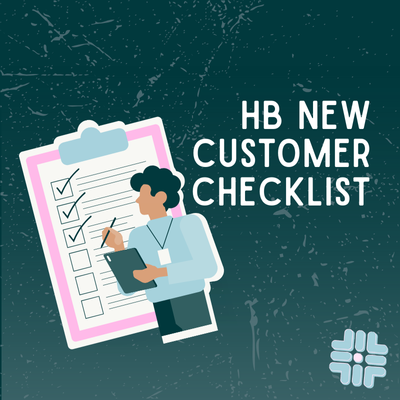Here at Hash Basis, we’re committed to helping accountants break into the crypto industry - after all, we think it’s the best (and most fascinating) asset class to account for! As crypto grows, so will the need for experienced and curious professionals. There’s currently a lack of qualified crypto accountants and this situation, combined with the general shortage of accountants nationwide, is creating a crunch in talent. To onboard more accountants into web3, we created a roundup of our favorite and most trusted content. We’re plugged into the crypto accounting and tax scene, so we’re familiar with the best guides, podcasts, and personalities out there. Our recommendations are a mix of technical and conversational resources that give the reader the skills to dive into crypto accounting and the context to succeed. We’re a small but thriving group and love getting “into the weeds” to figure out what the heck is happening on-chain.
Onto the Hash Basis Faves ✨
Theoretical
For all those accountants who are curious about the “why”
Accounting for and Auditing of Digital Assets Practice Aid
I remember this guide fondly since it was my first introduction to the elaborate world of digital asset accounting. It covers the essentials starting with the definition of indefinite life intangibles and ending with best practices for auditing crypto. I loved this practice aid because it covers an in-depth example of mining and how to recognize block rewards and transaction fees under ASC 606 (which was extremely valuable when I was at Figment). It also pontificates on foundational crypto accounting concepts like principal market, principal versus agent and embedded derivatives.
Note: even though US GAAP around digital assets is changing, this is still a stellar document that gets the reader up to speed on the current state of crypto accounting.
KPMG Guides on NFTs and Staking
Since specific FASB guidance around NFTs and validating/delegating on Proof-of-Stake networks is nonexistent, these KPMG guides are a shred of hope for crypto accountants. The NFTs guide reviews the underlying rights and obligations associated with NFTs from the perspective of the seller, reseller, purchase, marketplace and custodian. It reads like a legal document since the accounting questions for NFTs often boil down to the legal ones (i.e. “Is the promise to provide the good or service or to transfer a right to that good or service?”). It also gets into the ASC 606 5-step revenue recognition model (see below) and considers other relevant guidance like accounting for licensing, software-as-a-service, and functional vs. symbolic IP. I also loved that it defines “lazy minting,” which is when minting occurs when someone purchases the NFTs (so the purchaser pays the gas fee).

The validation guide was also excellent and relevant during my time at Figment. The most critical question for validators and delegators to answer is who is the principal and who is the agent? There’s arguments either way, but KPMG made the case that validators are typically the principals because they (1) own or the lease the servers, (2) are selected by the protocol to validate blocks (instead of individual delegators being selected), and (3) may compensate the delegators in the event of slashing. There’s also incredible nuances within each PoS chain - some chains remit 100% of the staking rewards to validators, who are then responsible for remitting a percentage to their delegators. On other chains, the split between validator commission and delegator rewards happens programmatically on-chain. It’s a sticky issue, rife with other complications like noncash consideration, variable consideration and control evaluation.
FASB Exposure Draft on Digital Assets and the Related Comment Letters
After grasping the current state of crypto accounting, it’s time to look into 😵💫the future 😵💫. The cost-less-impairment model for digital assets is about to get axed and be replaced with fair value (likely with the exception of NFTs, wrapped tokens and governance tokens). The exact wording is,
“An entity would be required to subsequently measure crypto assets that meet those criteria at fair value with changes recognized in net income each reporting period.”
Gone are the days when your balance sheet reflects rock-bottom bear market prices instead of current valuations (which management is already using anyway). Just book a cumulative adjustment to opening retained earnings for the difference between fair value and carrying value and you’re on your way! Other proposed changes include:
- Expensing all gas fees (instead of capitalizing them)
- Disclosing the name, cost basis (+ methodology), fair market value and amount of crypto for each “significant crypto asset holding”
- Preparing an annual rollforward of crypto activity showing additions, dispositions, gains and losses
I also recommend skimming the comment letters for this draft (you can read Hash Basis’ letter here). It’s a rare peek into what the other brains in the room are thinking about this issue. It’s about the best form of entertainment accountants get. 🍿
Practical
Resources that will get you through the tax return or wallet reconciliation
BitwaveU
Bitwave is an enterprise crypto subledger that’s been in the industry since 2018. Their content game has always been strong, as evidenced by their many webinars, Enterprise Digital Asset Summit (an in-person conference before Consensus) and most recently, their release of BitwaveU, an online learning platform. BitwaveU has courses on web3 basics like NFTs, wallets and blockchain fundamentals and also intermediate crypto accounting (i.e. deferred revenue, mining and validator revenue, FASB updates, etc).
One of the most valuable parts of BitwaveU is their Bitwave Certification course (which I had the opportunity to take in Austin this past April). This training helps accountants become familiar with how subledgers work - and while all subledgers are slightly different, they all contain the same basic features. And did I mention you can earn CPE credits for these courses as well?
Koinly Crypto Tax Articles
Koinly is a crypto tax platform that’s best suited for individuals with small to moderate levels of on-chain activity (although they just released a beta integration with Quickbooks, which could signal their entrance to the enterprise space!). They are my go-to software for our individual clients and have a top-notch support team. I’m also a big fan of their blog and crypto tax articles - whenever I have an obscure question about margin trading, borrowing/lending, rebasing, etc, I can count on their blog to have a clear explanation. Some of my favorite articles include:
- Rebase Tokens Guide: What Are They & How Do They Work?
- How is Crypto Margin Trading Taxed?
- What is Liquidity Mining and How is it Taxed?
- USA DeFi Taxes: The Ultimate Guide
- How Crypto Fees Can Lower Your Tax Bill
Crypto tax usually ends up in the capital gains or ordinary income buckets, but it’s helpful to have an explanation of the underlying on-chain activity before diving into the tax consequences. Koinly is also great for international crypto accountants because they have content/guidance for most major jurisdictions (not just the US).
Shout out to Michelle Legge for authoring all of these articles!
The Accountant Quits Podcast
Hosted by Umar Hassam, this show interviews the “who’s who” of crypto accounting (shout out to the episodes featuring Antoine Scalio from Cryptio, Kevin Ngo from Polywrap and Eleni Steinman from Loop). Knowing who is in our space is just as important as the technical skills - and since crypto accounting is still niche, it’s easy to make a big splash as a newcomer.
Umar is also the organizer of the Web3 CFO Club, an online community for professionals in crypto finance, accounting and tax. It’s got a thriving slack channel, live events during mainstream conferences and dapper swag!

Additional Resources:
- Crypto Tax Girl’s course on how to do your own crypto taxes
- Cryptio’s Finance Forum happening in September 2023 (right before Mainnet)
- Crypto with Accountants podcast, hosted by Bitwave
- Crypto CFOs community & recently announced partnership with Integral (includes crypto accounting courses and CPE)
- Anna Masker’s Women in Crypto Accounting LinkedIn group (we meet for happy hours monthly!)
We hope you find these resources useful! As always, if you have any questions, reach out to us at hashbasis.xyz.
.svg)

.svg)





.svg)
.svg)

.svg)